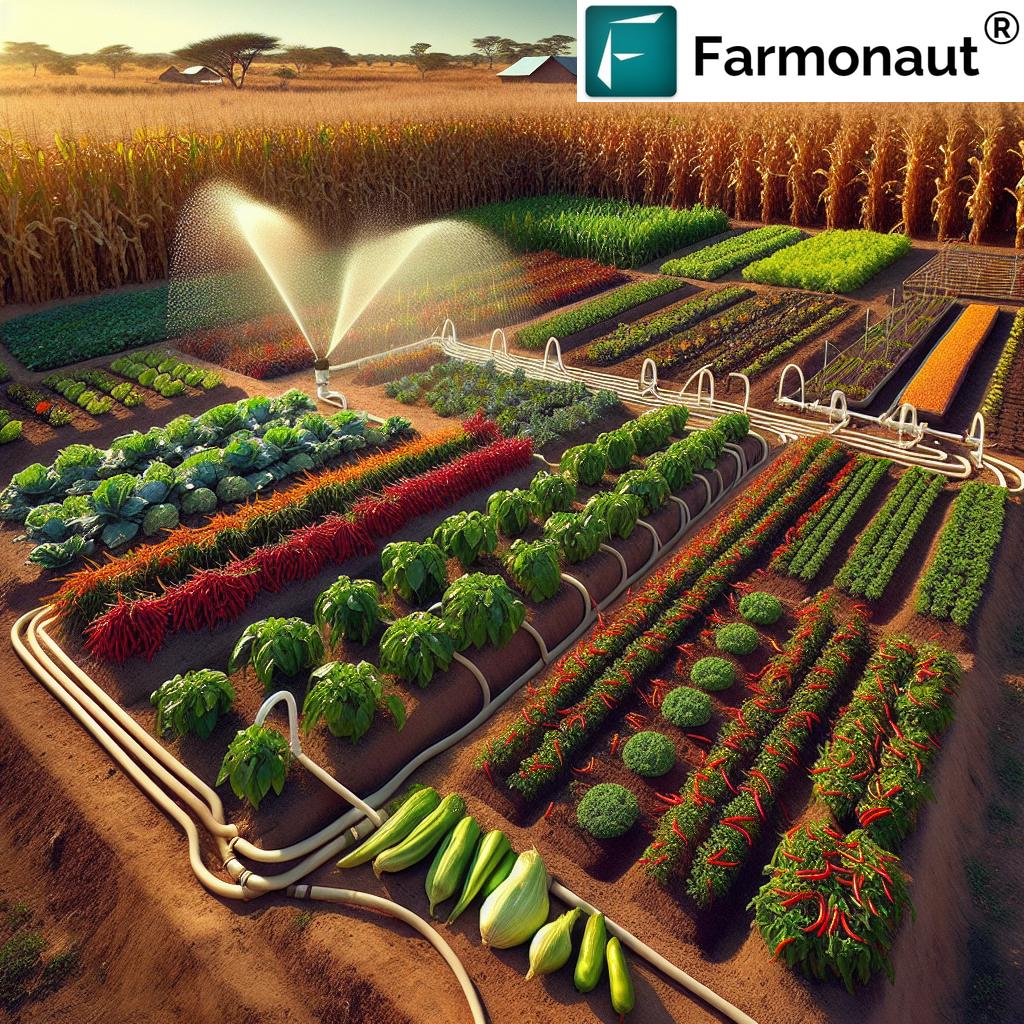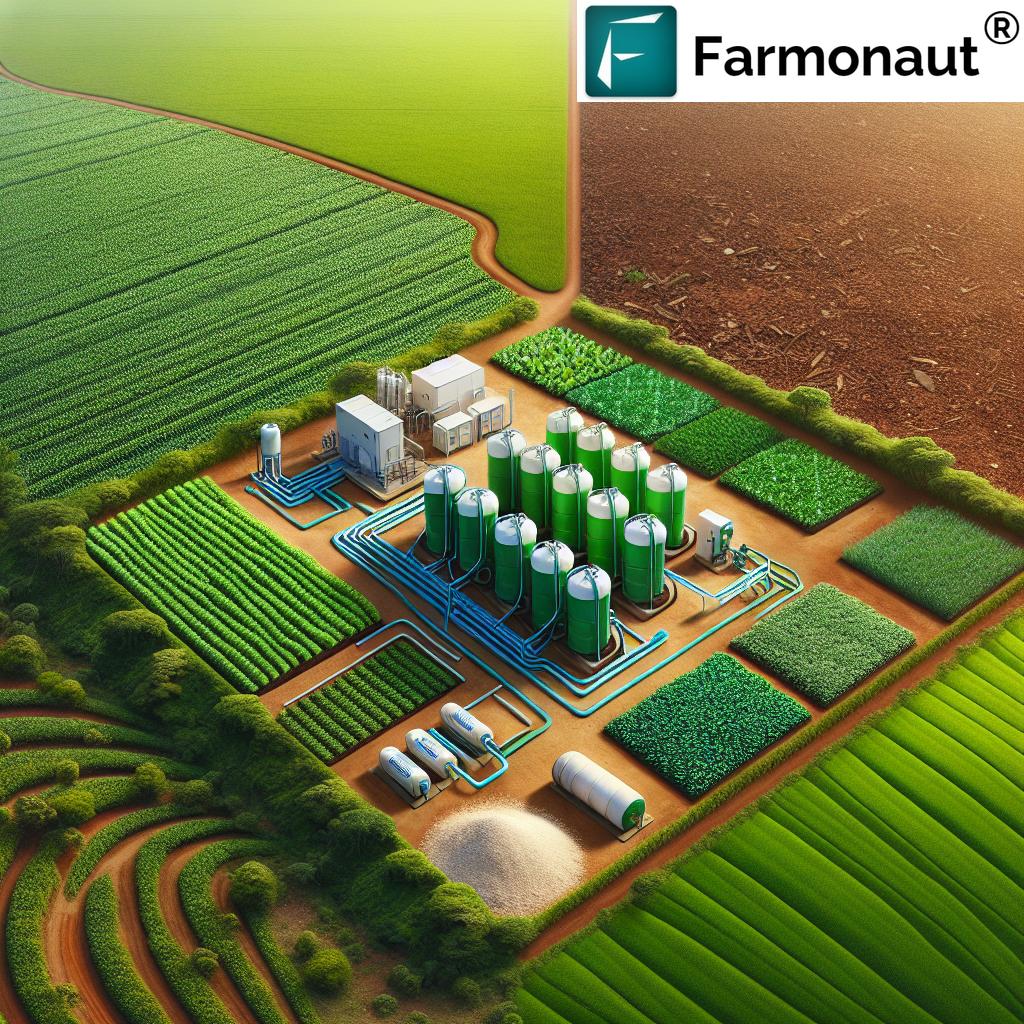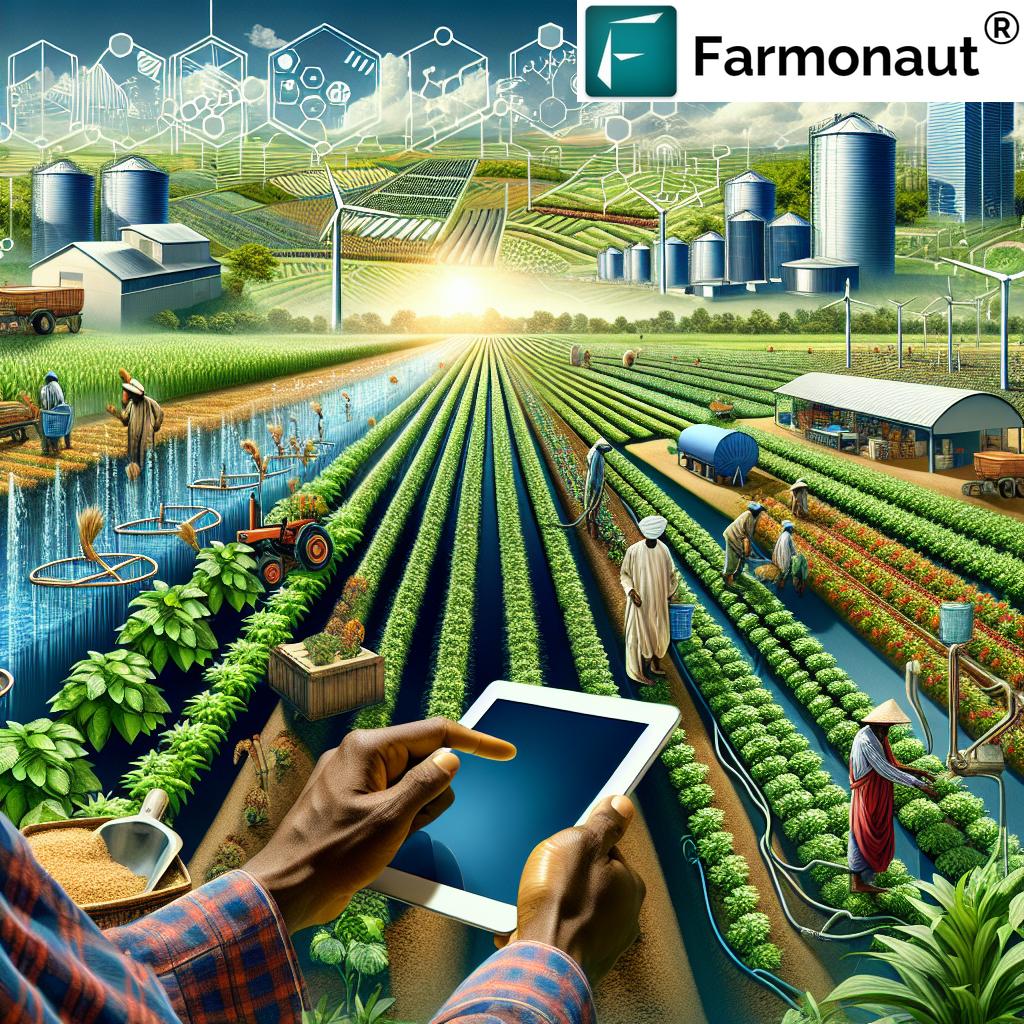Agricultural Land in Ethiopia: 2023-2025 Growth Trends
“Ethiopia’s agricultural land covers over 36% of its total area, supporting 85% of the population’s livelihoods in 2023.”
- Introduction: Ethiopia’s Agricultural Landscape
- Current Status of Agricultural Land in Ethiopia 2023
- Key Agricultural Growth Trends: 2023-2025
- Land Management & Sustainability: Challenges and Solutions
- The Role of Government and National Initiatives in 2023-2025
- Digital Agriculture and Satellite Technology: Modernizing Ethiopian Farming
- Food Security and Export Markets: Current Status and 2025 Prospects
- Year-on-Year Comparison Table: 2023-2025
- Future Prospects and Strategic Recommendations
- Frequently Asked Questions
Introduction: Ethiopia’s Agricultural Landscape
Agricultural land in Ethiopia has long been the backbone of the nation’s economy, employing approximately 70% of the population and contributing around 33% to GDP by 2025. The country’s diverse agroecological zones and a vast expanse of arable hectares—estimated at over 37 million—reflect immense potential for food security, rural livelihoods, and economic growth.
However, agriculture in Ethiopia 2023 and beyond is a landscape marked by both promise and challenge. Land management, sustainable practices, and climate adaptation remain critical as we look to maximize this potential for the benefit of all Ethiopians, now and into 2025.
Current Status of Agricultural Land in Ethiopia 2023
A Nation Shaped by Agricultural Land
By 2023, agricultural land in Ethiopia accounted for over 36% of the country’s total area, a critical resource supporting approximately 85% of the population’s livelihoods—particularly in rural regions. The nation’s current status is dominated by smallholder farms averaging less than 2 hectares in size, with cropping systems primarily focused on key crops like teff, maize, wheat, and barley. Pulses, oilseeds, and horticultural produce are also integrated, contributing to both food security and income diversification.
Key Characteristics of Ethiopia’s Agricultural Land in 2023
- Agricultural land in Ethiopia spans an estimated 37 million hectares.
- 70% of the population is employed in agriculture.
- Around 33% of national GDP originates from the agricultural sector.
- Less than 20% of this land uses sustainable irrigation systems; the majority is reliant on rain-fed agriculture.
- Land degradation and soil erosion remain significant, with over 25 million hectares affected.
- The dominant cropping systems include cereals like teff, maize, wheat, and barley.
- Pastoralism and agro-pastoralism occupy arid and semi-arid zones, especially in the Somali and Afar regions.
Despite an abundant resource base, the current reliance on rainfed systems and rural land management challenges highlight the sector’s vulnerability to climatic variability and the critical need to enhance sustainability and productivity.
The Dominance of Smallholder Farms
In 2023, farming in Ethiopia consists primarily of smallholder farms, each averaging less than 2 hectares in size. These farms are the primary source of food and income for most households, supporting rural livelihoods, environmental stewardship, and the social fabric of the nation.
- Smallholders contribute the bulk of staple cereals and pulses.
- Farms often integrate livestock, agroforestry, and diversified cropping systems—crucial for climate adaptation and income resilience.
Major Crops and Land Use in 2023
- Cereals: teff, maize, wheat, barley
- Pulses: beans, lentils, chickpeas
- Oilseeds: sesame, niger seed, sunflower
- Horticultural crops: vegetables, fruits, coffee
- Pastoralism in arid lowland zones
The current status shows that agricultural practices remain the backbone of the rural economy, but are also marked by land management challenges and environmental degradation.
Key Agricultural Growth Trends: 2023-2025
Growth Trends in Agricultural Land and Sustainability
Looking at agricultural land in Ethiopia and agriculture in Ethiopia 2023, several critical growth trends have emerged, laying the groundwork for big changes by 2025:
- Expansion of Irrigated Land: Government initiatives aim to increase the percentage of irrigated hectares by at least 15% from 2023 to 2025. This is crucial for drought resilience and for reducing vulnerability to climate shocks.
- Adoption of Modern Techniques: The emphasis on mechanization, improved seed varieties, and extension services has witnessed marked acceleration, enhancing crop yield and sustainability.
- Increased Integration of Digital Tools: 2023 saw a marked push for digital platforms providing weather forecasts, market access, and agronomic advice directly to farmers.
- Export Diversification: Beyond traditional staples, attention is shifting to high-value crops and international coffee, pulse, and horticultural markets.
- Momentum in Conservation Agriculture: Rehabilitation of over 2 million hectares using reforestation, terracing, and conservation practices is a stated target for 2025.
These agricultural developments and trends highlight an era of modernization, growth, and sustainability in Ethiopian farming.
The Push Toward Sustainable Management
A key government goal is to increase sustainable land management practices on 2 million additional hectares by 2025, aiming to reduce degradation and enhance food security.
“By 2025, Ethiopia aims to increase sustainable land management practices on 2 million additional hectares to boost food security.”
Changes in Export Crops and Market Orientation
- Export-oriented growth in coffee, pulses, oilseeds, and horticulture continues to be a significant trend.
- Increasing global demand for sustainably produced products is driving investment in traceability and modern agricultural systems.
- Technological platforms support farmers with market price information, reducing reliance on intermediaries and increasing rural incomes.
Impact on Productivity and Food Security
The adoption of new seed varieties, mechanized farming, integrated pest management, and artificial intelligence-driven advisory platforms has led to measurable improvements in crop yields, farm management efficiency, and resilience to climate variability.
Land Management & Sustainability: Challenges and Solutions
Critical Challenges in Land Management
Despite abundant agricultural land and immense potential, several critical challenges continue to affect management and productivity of agricultural land in Ethiopia:
- Land degradation & soil erosion: Over 25 million hectares are suffering from varying degrees of degradation, which reduces productivity and threatens environmental sustainability.
- Deforestation and improper use exacerbate erosion; in arid/semi-arid zones, this is particularly acute.
- Limited irrigation infrastructure: With only 20% of agricultural land under irrigation, most farmers are vulnerable to climate shocks.
- Land tenure security remains a challenge, with many farmers lacking proper certification or clear rights.
Major Environmental Risks
- Climate variability and erratic rainfall
- Rising temperatures and changing weather patterns
- Pressure from population growth and expansion into marginal lands
- Threats to biodiversity from monocropping and chemicals
However, the government—and increasingly, technology—has begun to address these challenges with integrated efforts.
Key Solutions: Conservation, Rehabilitation, and Modernization
- Conservation agriculture, reforestation, and terracing: Slowing erosion and restoring soil fertility have gained significant momentum, with government and international initiatives.
- Promotion of drought-resistant crop varieties: This is a direct strategy to reduce the sector’s vulnerability and increase yields.
- Integrated pest management and agroforestry systems: These not only reduce negative environmental impact but also offer diversified incomes.
- Digital monitoring and advisory systems: Satellite data now helps monitor vegetation health, soil degradation, and guide conservation efforts.
The Role of Government and National Initiatives in 2023-2025
Strategic Investment in Agricultural Land and Rural Development
Government programs and policy shifts remain central to modernization and increased productivity. The Growth and Transformation Plan IV extension targets a substantial expansion of irrigation infrastructure and the rehabilitation of degraded environments.
- Emphasis on mechanization and improved seed use for higher yields.
- Expansion of extension services—providing critical information and support to smallholder farmers across diverse agroecological zones.
- Land tenure security reforms, including digital land registries and simplified certification, encourage sustainable investment and reduce conflicts.
Further, investments in rural infrastructure (roads, storage, market access) are helping to reduce post-harvest losses, improve market linkages, and enhance farmers’ incomes.
Momentum in Sustainable Practices
- By 2025, national drives target rehabilitating at least 2 million additional hectares using integrated management.
- Climate change adaptation is embedded in planning: focus on horticultural diversification, water harvesting, and soil conservation practices.
- Export diversification strategies: policy incentives encourage production beyond traditional cereals, opening new international markets.
These efforts are critical to Ethiopia’s ambition to transform its agriculture sector, reduce poverty, and increase food security.
Digital Agriculture and Satellite Technology: Modernizing Ethiopian Farming
The Era of Digital Agriculture: Satellite, AI, and Advisory Systems
Digital agriculture has emerged as a critical force for change in agricultural land management in Ethiopia. The spread of smartphones and digital platforms empowers farmers with weather information, market prices, agronomic advice, and resource management.
How Satellite Monitoring and AI Are Transforming Ethiopian Agriculture
Satellite and AI technologies are now being used to:
- Monitor vegetation health (NDVI), soil conditions, and land cover—all in real time.
- Deliver tailored advisory services (e.g., weather forecasts, cropping recommendations).
- Guide conservation, irrigation, and resource allocation efforts.
- Enable blockchain-based traceability to ensure transparent supply chains for export markets.
- Track carbon footprint and environmental impact, helping the agriculture sector reduce emissions and adopt sustainable practices.
At Farmonaut, we make it affordable for farmers, businesses, and governments in Ethiopia and beyond to access real-time satellite insights for their agricultural land management. Our platform delivers services such as environmental impact tracking (carbon footprinting) to promote sustainable agriculture, blockchain-based traceability solutions (traceability) for transparent supply chains, and resource management tools to optimize input use and enhance productivity for rural communities and large-scale operations alike.
Our subscriptions are flexible and designed for individual users, businesses, and governments. See pricing and explore additional features below:
Mobile and API Access
Access Farmonaut via:
- API Access: Farmonaut Satellite API – Integrate with your own farm or agricultural management software.
- Developer Docs: API Developer Documentation
For agricultural enterprises and cooperatives managing larger holdings, our Agro Admin app (large-scale farm management) enables efficient multi-site monitoring and integrated decision-making.
We also provide fleet management tools (fleet & resource management) for efficient agricultural equipment oversight and blockchain traceability for export compliance and consumer trust.
Food Security and Export Markets: Current Status and 2025 Prospects
Ethiopia’s Path to Food Security in 2025
With population growth, rural-urban migration, and pronounced climate variability, food security remains a paramount concern for Ethiopia. The nation’s ability to sustain its people hinges on a multi-faceted approach integrating:
- Expansion and sustainable management of agricultural land.
- Promotion of climate-smart and drought-resilient crop varieties.
- Investment in irrigation and rural infrastructure to reduce post-harvest losses and enhance market access.
- Wider uptake of technological solutions for resource optimization and risk reduction.
- Policies to reduce degradation in lands and increase soil fertility.
By 2025, Ethiopia is projected to improve its food security index by steering these efforts—enhancing national resilience to shocks and unlocking new agricultural markets domestically and globally.
Market Integration and Export Growth
Export growth in coffee, pulses, oilseeds, and emerging horticulture ties Ethiopia’s agricultural future to global markets. This shift is supported by value chain improvements, quality standards, and traceability requirements demanded by international buyers.
Year-on-Year Comparison Table: 2023-2025
| Year | Total Agricultural Land (million ha) |
Sustainable Land (%) | Adoption of Modern Techniques (%) | Crop Yield (tons/ha) |
Food Security Index (score) |
|---|---|---|---|---|---|
| 2023 | 37 | 34% | 29% | 2.1 | 52 |
| 2024 | 37.1 | 36% | 36% | 2.35 | 59 |
| 2025 (projected) | 37.2 | 40% | 43% | 2.6 | 66 |
Table: Estimated year-on-year progression for agricultural land in Ethiopia (2023, 2024, 2025). Figures are projections based on current efforts in sustainable management, modernization, and food security enhancement.
Future Prospects and Strategic Recommendations
Maximizing Agricultural Potential for 2025 and Beyond
The outlook for agricultural land in Ethiopia is defined by both opportunity and challenge. Realizing the nation’s immense potential requires a sustained, integrated effort from policymakers, industry, technology leaders, and rural communities.
- Sustainable Management and Soil Health: To reduce risk and increase productivity, efforts should continue to focus on expanding conservation agriculture, increasing hectares under sustainable use, and promoting agroforestry systems in diverse agroecological zones.
- Technology and Modernization: Continued investment in digital advisory platforms, satellite monitoring, and improved seed varieties will drive modernization. Farmonaut’s carbon footprint tracking service and agricultural fleet management tools are prime examples of how data-driven insights can support more productive, sustainable, and rewarding land management.
- Climate Adaptation and Infrastructure: Resilience against climate shocks demands more irrigation, rainwater harvesting, and robust rural infrastructure. Modern logistics and storage will reduce waste, while improved transport boosts market access.
- Market Integration: As Ethiopia penetrates new export markets, meeting international standards for traceability, sustainability, and quality, as facilitated by Farmonaut’s traceability platform, will become paramount.
- Land Tenure Reform: Ongoing reforms for digital certification will increase land tenure security—which is critical for investment, conflict reduction, and long-term productivity.
For a tailored approach to crop plantation, forest advisory, or integrated management of farm assets, our platform’s dedicated solutions (crop plantation and forest advisory) provide actionable insights for farms of any size.
Asset managers and rural cooperatives can benefit from centralized control, analysis, and strategic decision-making with our large-scale farm management app.
Frequently Asked Questions (FAQ): Agricultural Land in Ethiopia 2023-2025
Q1: What is the current status of agricultural land in Ethiopia?
As of 2023, agricultural land in Ethiopia covers around 37 million hectares, making up over 36% of the country’s total land area. Farming is dominated by smallholder farms averaging less than 2 hectares in size, with significant portions in rain-fed cropping and pastoralism.
Q2: What are the major crops produced on Ethiopia’s agricultural land?
Ethiopia’s dominant crops include teff, maize, wheat, barley (cereals), beans, lentils, chickpeas (pulses), oilseeds (sesame, niger seed), and a variety of horticultural products. Coffee and pulses are increasingly important export crops.
Q3: How is Ethiopia addressing land degradation?
The government and other stakeholders focus on conservation agriculture, reforestation, terracing, and adoption of drought-resilient crops. Technologies like satellite monitoring and environmental tracking (e.g., through Farmonaut’s carbon footprinting services) help guide restoration efforts and reduce long-term risks.
Q4: What role does digital agriculture play in 2025?
Digital tools deliver real-time weather, advisory, and market information to farmers, increasing yields and reducing risks. Satellite data, AI, and blockchain are central in land monitoring, supply chain integrity, and sustainable management, as seen in Farmonaut’s suite of solutions.
Q5: What are Ethiopia’s prospects for food security in 2025?
With ongoing investment in sustainable land management, irrigation expansion, improved seeds, and market orientation, Ethiopia aims to enhance its food security index notably by 2025. The projected rehabilitation of 2 million new hectares is a key policy target.
Conclusion: Securing the Future of Agriculture in Ethiopia
Agricultural land in Ethiopia remains at the heart of its development dreams. In the face of challenges such as land degradation, climate variability, and infrastructural deficits, the nation’s commitment to sustainable management, rural empowerment, technological modernization, and food security is unwavering.
By 2025, the growth trends point toward a resilient and modern agriculture sector—driven by integrated efforts in conservation, innovation, and digital transformation. With tools like Farmonaut at the fore, solutions that were once out of reach for smallholder and commercial farmers alike are now affordable and actionable.
Ethiopia’s abundant land, vibrant farming communities, and ongoing reforms are laying the foundation for a more productive, sustainable, and market-oriented future—securing food sovereignty and inclusive growth for millions and strengthening the backbone of the nation’s economy for generations to come.













